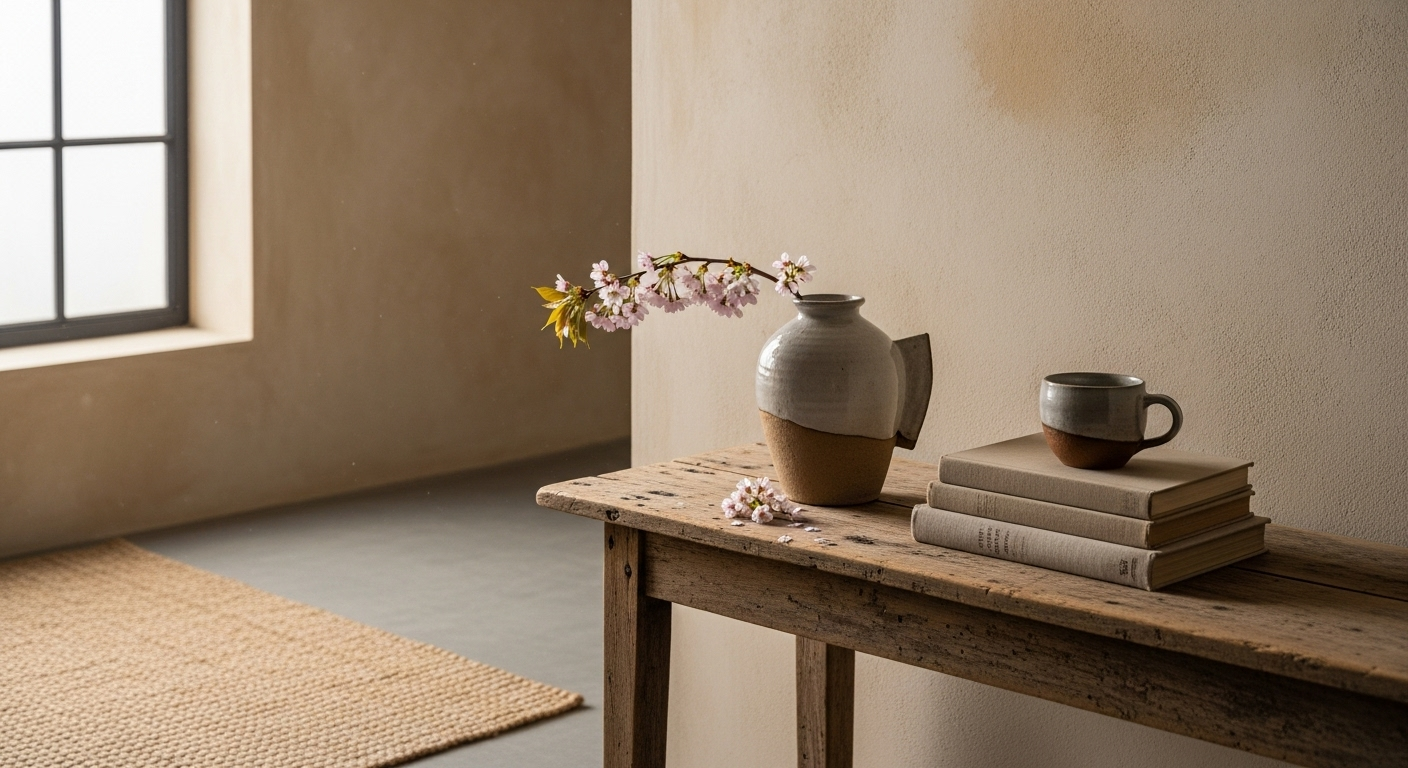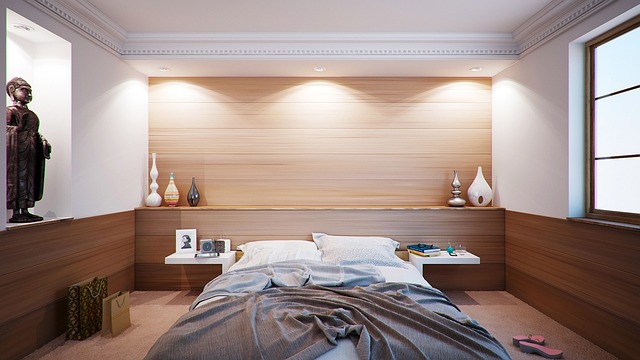Wabi-Sabi: Embracing Imperfection in Home Design
The gentle art of finding beauty in imperfection and profundity in nature, accepting the cycle of growth, decay, and death – this is the essence of wabi-sabi. Originating from Japanese aesthetics, this philosophy is making waves in Western interior design, offering a refreshing counterpoint to the polished perfection often sought in modern homes. Let's explore how wabi-sabi can transform your living space into a haven of tranquility and authenticity.

The Roots of Wabi-Sabi
Wabi-sabi finds its origins in 16th century Japanese tea ceremonies, where simplicity and rustic elegance were prized above ornate decoration. The term combines two concepts: ‘wabi,’ referring to simplicity and humility, and ‘sabi,’ which embraces the beauty that comes with age and wear. Together, they form a worldview that appreciates the fleeting nature of beauty and the dignity of natural processes.
In traditional Japanese culture, wabi-sabi manifested in architecture through the use of natural materials, asymmetrical designs, and spaces that invited contemplation. Zen Buddhist monks were particularly influential in developing this aesthetic, seeing in it a reflection of the impermanence of all things – a core tenet of their philosophy.
Wabi-Sabi in Modern Home Design
Today, wabi-sabi offers a refreshing alternative to the sleek, mass-produced aesthetic that has dominated interior design for decades. It encourages us to find beauty in the cracks, chips, and wear that come with use and time. In a wabi-sabi inspired home, you might find:
- Handcrafted items with visible imperfections
- Natural materials like wood, stone, and clay
- Muted, earthy color palettes
- Simple, functional furniture arrangements
- Plants and elements that change with the seasons
The key is to create a space that feels lived-in and authentic, rather than staged or artificial. This approach not only creates a more relaxing environment but also promotes a more sustainable lifestyle by valuing longevity and repair over constant replacement.
The Psychology of Imperfection
Embracing wabi-sabi in our homes can have profound psychological benefits. In a world that often demands perfection, surrounding ourselves with objects that bear the marks of time and use can be deeply comforting. It reminds us that we, too, are allowed to be imperfect and that our flaws are part of what makes us unique and beautiful.
Research has shown that environments that feel authentic and connected to nature can reduce stress and improve overall well-being. By incorporating wabi-sabi principles, we create spaces that feel more humane and less sterile, fostering a sense of ease and contentment.
Practical Applications of Wabi-Sabi
Implementing wabi-sabi in your home doesn’t mean completely overhauling your space. Instead, it’s about shifting your perspective and making small, meaningful changes. Here are some ways to bring wabi-sabi into your home:
- Embrace natural textures: Use linen, raw cotton, and other natural fibers for textiles. Opt for furniture with visible wood grain or stone with natural veining.
- Celebrate handmade items: Incorporate ceramics, hand-woven baskets, or artisanal furniture. These pieces bring a sense of humanity and uniqueness to your space.
- Allow for weathering: Instead of immediately refinishing or replacing items that show wear, consider how they might add character to your home.
- Incorporate nature: Bring in plants, branches, or stones from your local environment. These elements connect your home to the natural world and change with the seasons.
- Simplify your space: Declutter and keep only items that are truly meaningful or functional. This creates room for contemplation and appreciation of what remains.
Wabi-Sabi and Sustainability
One of the most compelling aspects of wabi-sabi for modern homeowners is its alignment with sustainable living practices. By valuing objects that age gracefully and can be repaired, we reduce waste and consumption. This philosophy encourages us to buy less but buy better – choosing items made from durable, natural materials that will develop character over time.
Moreover, wabi-sabi’s emphasis on natural materials and processes often leads to healthier living environments. Natural fibers, non-toxic finishes, and organic elements can improve indoor air quality and create a more harmonious atmosphere.
Challenges and Considerations
While wabi-sabi offers many benefits, it’s not without its challenges. In a culture that often equates newness with value, it can be difficult to convince family members or guests of the beauty in imperfection. Additionally, there’s a fine line between wabi-sabi and neglect – it’s important to maintain and care for your possessions, even as you embrace their aging process.
Balancing wabi-sabi with modern conveniences can also be tricky. While the philosophy encourages simplicity, most of us aren’t willing to give up our technological comforts. The key is to find ways to integrate these elements thoughtfully, perhaps by choosing electronics with more timeless designs or creating designated tech-free zones in the home.
The Future of Wabi-Sabi in Western Design
As we move further into the 21st century, the principles of wabi-sabi seem more relevant than ever. In a world grappling with environmental concerns and the effects of constant connectivity, this ancient philosophy offers a path to more mindful, sustainable living.
Designers and architects are increasingly incorporating wabi-sabi elements into their work, creating spaces that feel both contemporary and timeless. As this trend grows, we may see a shift away from the disposable culture that has dominated in recent decades, towards a more thoughtful approach to our living environments.
Wabi-sabi reminds us that our homes are not just showcases, but living spaces that should evolve with us. By embracing imperfection, we open ourselves to a deeper appreciation of the beauty that surrounds us every day. In doing so, we may find that our homes become not just more beautiful, but more comfortable, sustainable, and aligned with our values.





